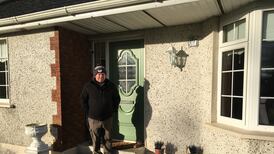A significant archaeological find has been uncovered at a construction site in south Dublin.
Archaeologists working on a site for new homes at Kilgobbin Lane, Stepaside, near the remains of Kilgobbin Church and High Cross, have discovered evidence of a wealthy community living close to the church between AD 500 and AD 1000.
The find seems to coincide with the founding of the original church - or immediately predates it.
Developers Albany Homes Ltd employed the archaeologists as part of the conditions of planning permission granted by Dún Laoghaire/Rathdown County Council for 50 houses and 14 apartments at the site. The area being excavated will be part of a green space in the housing development.
The archaeological finds are to be recorded, preserved in situ or donated to the National Museum. Some material will be removed to make way for utility pipes to the new homes.
The standing remains of Kilgobbin Church date back to 1707 but are built on the site of a church thought to have been founded in the late-first century by St Gobban. The nearby Celtic high cross, a national monument, also dates from the first century.
So far, archaeologists have discovered evidence of early industry at the site, including furnaces and hearths, as well as signs of iron and glass-working.
There is also a series of cut ditches suggesting that the development is part of a circular enclosure which would have included the site of the church. However, not all of the ditches are contemporary.
According to the project director, Ms Teresa Bolger, of Margaret Gowen and Co Ltd, the find should fill in a lot of information about the development of Kilgobbin Church.
"To date, the early history of the church is not well-known," Ms Bolger said. "Hopefully, our work will help to uncover what status the church had in the society of the time."
She described the site as significant and said that it was unusual to discover so much evidence in one place.
"We are dealing with a rich community," she said. "This is a high-status site - ecclesiastical sites tend to be wealthy."
She said that most of the green spaces to be included in the Albany Homes development have high archaeological potential, and she commended the developer for ensuring that they would be preserved.
"There is a balance you have to strike between development and preservation," she added.
"If you work with archaeologists, you can ensure that as much as possible will be preserved."
Labour councillor Ms Lettie McCarthy said that the find is a really exciting discovery. "These finds yet again highlight the archaeological importance of our area," she said.








